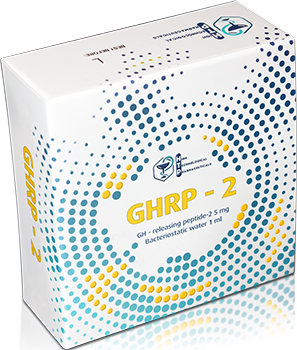GRF 1-29

Structural characteristics:
GRF, the modified GRF (1-29), often abbreviated as GRF mod (1-29), originally known as tetrasubstituted GRF (1-29), is a term used to identify a 29 amino acid peptide analog of the growth hormone-releasing hormone GHRH), which stimulates the release of growth hormone (GH). This is a modified version of the shortest fully functional fragment of GHRH, often called the growth hormone releasing factor (1-29) and also known by its standard name, Sermorelin.
Description:
GRF (1-29) is a peptide hormone that mimics the capabilities and effects of GHRH, a natural hormone in the human body. GRF (1-29) consists of 29 amino acids that produce GHRH; however, unlike the naturally occurring GRF (1-29), there is a much shorter period of time, unlike CJC-1295 with all the same structural and action-like GRFs (1-29) being modified and without added drug affinity complex or DAC. Without DAC, the GHRH mimicking effect is much shorter.
GRF (1-29) functions by promoting stable and even release of naturally produced HGH in the body. It does not lead to a leap in HGH levels but rather increases overall daily production. GRF (1-29) can be ideal for those looking for steadily elevated but also high levels of HGH. The half-life of GRF (1-29) is several hours, so several injections are needed daily.
Effects:
The effects of GRF (1-29) can be great if you break any possible effect that is caused by elevated levels of HGH in the body. The main benefit of elevated HGH levels may be the increase in insulin-like growth factor-1 (IGF-1). IGF-1 affects almost every cell in the human body from bones and muscles, lungs, skin and even the central nervous system. HGH and IGF-1 are essential components in the regulation and promotion of healing and recovery as well as in the regulation of metabolism. Overall, the effects of GRF (1-29) are similar to those of HGH but without unpleasant stricter effects.
GRF (1-29) can be used for all purposes in productivity gains, although fat loss or shredding is the most. For an off-season athlete who wants to raise muscle mass, GRF (1-29) is not a very good choice, at least not when used alone. However, when combined with other productivity-enhancing drugs, the individual may find that he or she is receiving more of them due to elevations in HGH and IGF-1 levels. He also has to find out that due to the stronger metabolism he is able to stay clearer than fat when muscle mass accumulates.
By using GRF (1-29) to clear fat, because of the highly improved metabolism, the individual will have a much more powerful effect. He must also find an improvement in healing from injuries and recovery from stresses, which is extremely important during the clearing phase, as the recovery is delayed due to the required caloric limit.
HGH. GRF users (1-29) also have to find that their immune system is stronger and that sleep improves.
Dose and administration:
GRF (1-29) is a fine white powder in a vial to be mixed with bacteriostatic water. The powder should be stored in dry and cool places without direct sunlight. The solution should be used with subcutaneous injection into the body fat using a very small needle or intramuscular injection with a suitable one. Once combined in solution, GHRP-6 should be stored in a refrigerator (between 2 and 8 ° C / 36 ° F and 46 ° F) because the amino acid chain is likely to disintegrate and affect its effectiveness. GRF (1-29) is required to be elicited from 2 to 3 pts per day, the saturation dose being from 100 to 400 μg depending on needs. When the peptide is combined with a GHRP group of peptides such as GHRP-6, GHRP-2, Hexarelin, Ipamorelin, the daily dose can be lowered to 100-200 mcg 2-3 times a day.
Side Effects:
The most common undesirable effect of GRF (1-29) is mild irritation at the injection site, although it is rarely severe or very painful. Some users may have irritated injection sites, regardless of location, but most will find that specific areas of the body respond better than others.
Behind the irritation on site may be water. High doses are usually responsible for the retention of water or fluids and can be reduced by varying the dose. Some users may also feel that they feel numbness or tingling in the hands or feet during use.
The headache can also be a side effect of GRF (1-29). Headache is most often due to a fall in blood sugar when using the peptide. Diets may need to be adjusted during use. Severe headache is possible in very rare cases, and again diet adjustments can remedy the problem, but if the headache persists, it may be necessary to discontinue use.
Overdosage:
If overdose of GRF 1-29 is suspected, contact your Doctor immediately.